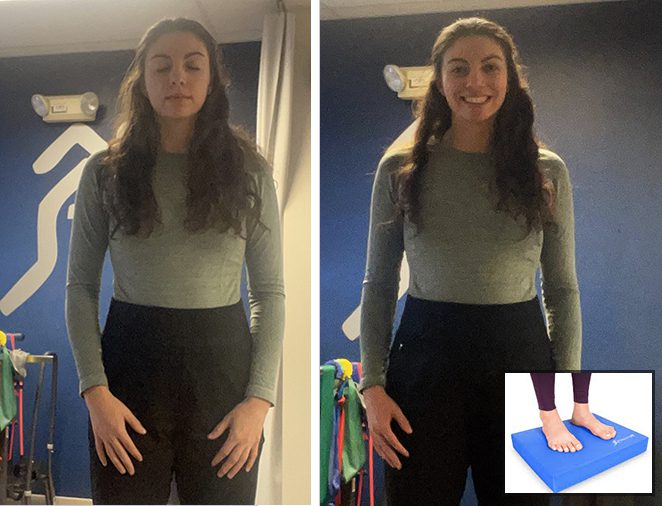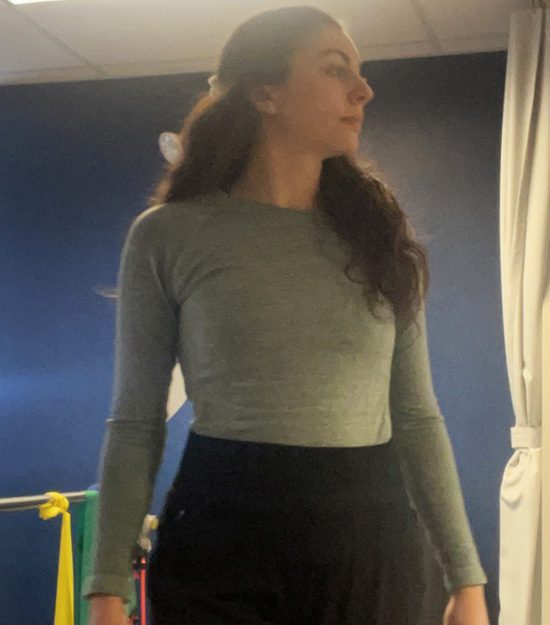
Balance Systems
by Brielle Sufat, PT, DPT –
Experiencing recent loss of balance, instability, or tripping? There are a variety of factors that may be playing a role into what is causing you to lose your balance We are going to dive into a closer look at 3 different systems that contribute towards maintaining balance. The Somatosensory system, Visual system, and Vestibular system work in unison to ensure equilibrium, stability and proper balance. Each of the 3 systems have individual roles in maintaining balance. It is beneficial to understand what each system is responsible for to identify what the cause of loss of balance may be and how we can help strengthen and train the system to promote improved balance strategies.
We are going to dive into a closer look at 3 different systems that contribute towards maintaining balance. The Somatosensory system, Visual system, and Vestibular system work in unison to ensure equilibrium, stability and proper balance. Each of the 3 systems have individual roles in maintaining balance. It is beneficial to understand what each system is responsible for to identify what the cause of loss of balance may be and how we can help strengthen and train the system to promote improved balance strategies.
Somatosensory System: this system is responsible for sensing where your body is in space and feeling the ground beneath you.
♦ Walking to the bathroom in the dark in the middle of the night is an example of a situation in which your balance relies on the somatosensory system.
→ The somatosensory system maintains your balance in this situation by using the sensation input from your feet to feel the ground beneath you.
→ If you have neuropathy, or another diagnosis that causes loss of sensation in the feet, it may be beneficial to add night lights en route from your bedroom to the bathroom to be able to rely on your visual system to maintain balance.
→ It may also be a good idea to remove any throw rugs or other tripping hazards to minimize fall risk.
Visual System: uses what you can see in your environment to process body position relative to your surroundings.
♦ Walking through a busy mall is a situation in which the visual system be used to maintain balance and minimize fall risk by processing the movement of other individuals and objects in the walkways to adjust speed and direction of walking.
Vestibular System: this system relies on head and body position relative to gravity to orient you.
♦ Moving in an elevator is a situation in which the vestibular system will be relied on to maintain balance. When you are in a closed elevator your visual system will be under the impression that your environment is staying still, however with the input from the vestibular system will be used to indicate that you are moving.
By doing a thorough assessment of what conditions may be causing your loss of balance, we can accurately prescribe balance exercises to train the balance system that needs strengthening.
For a brief, yet thorough explanation of the 3 balance systems and how to train them, you can watch this video: https://www.youtube.com/watch?v=fghxd9XHuEs
Examples of balance exercises to train each system
*please do not try these exercises without supervision or consult with PT if you experience difficulty maintaining balance*
Somatosensory Practicing maintaining balance with eyes closed or standing on an unstable surface such as a foam pad will emphasize the use of the somatosensory system.
Practicing maintaining balance with eyes closed or standing on an unstable surface such as a foam pad will emphasize the use of the somatosensory system.
Vision Playing toss with a ball
Playing toss with a ball
Walking through a busy room while naming objects in your peripheral vision.
*2 examples of exercises that will emphasize the use of the visual system in maintaining balance*
Vestibular Practicing standing or walking with head turns will emphasize the use of the vestibular system to maintain balance.
Practicing standing or walking with head turns will emphasize the use of the vestibular system to maintain balance.
If you think you or someone you know may benefit from a PT assessment to examine why you may be losing your balance, and may benefit from an individualized plan to improve your balance, please contact us at Hampton PT! 😊






